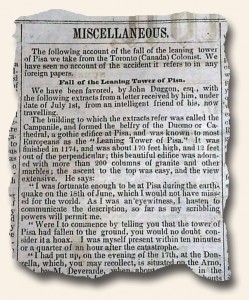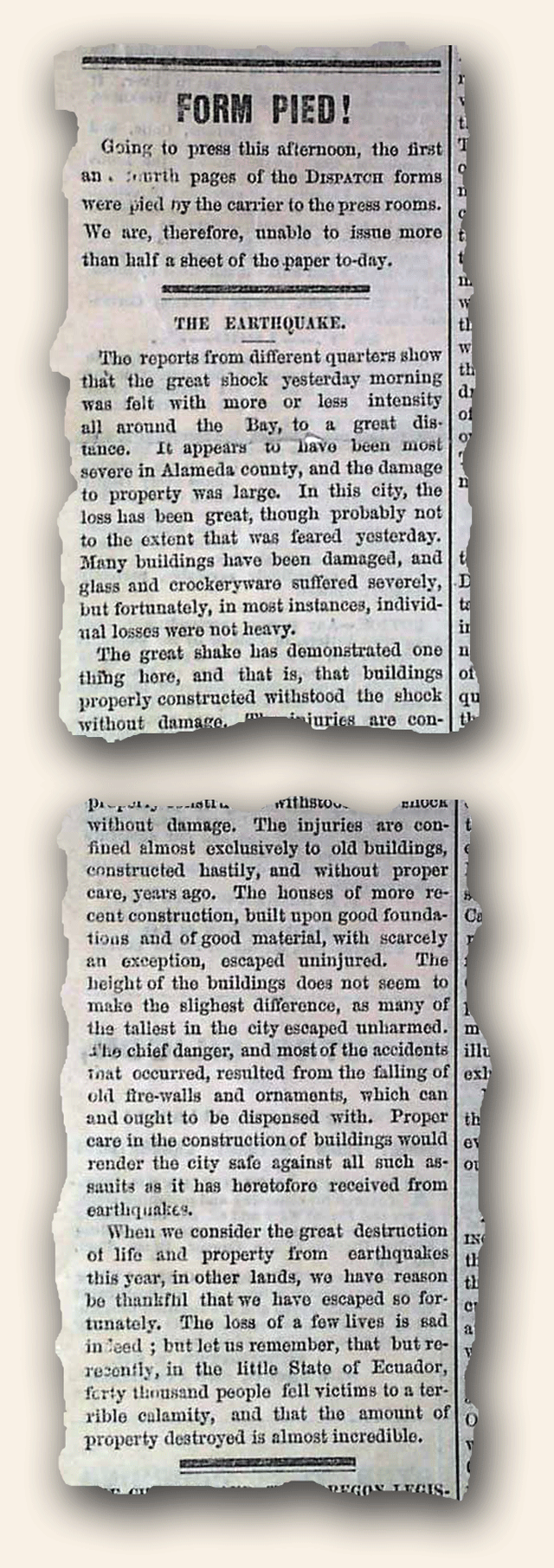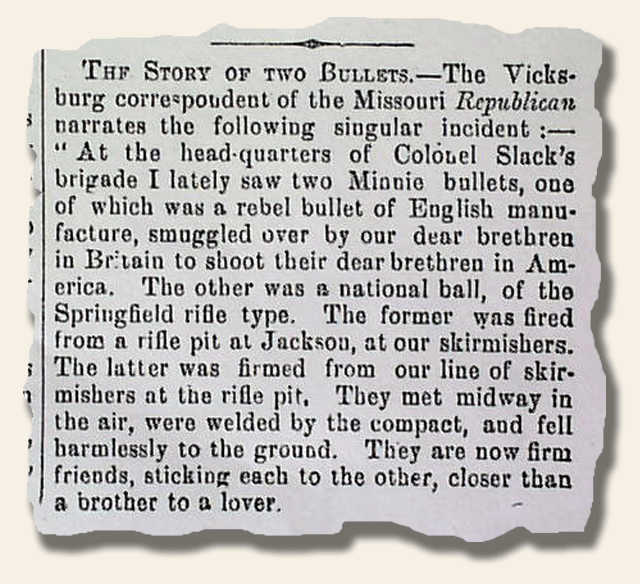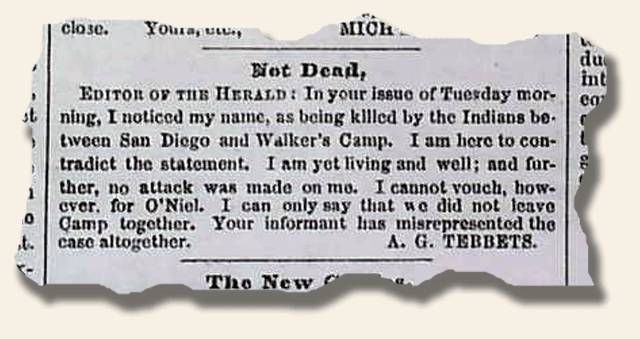They Put It In Print – The 12th President of The United States…
February 16, 2024 by GuyHeilenman · Leave a Comment
Who was the 12th president of The United States of America? Okay, perhaps your high school civics teacher didn’t require you to memorize their names in chronological order, but in case they did I’ll give you a little more time so you can run through them starting with Washington (hint, you’ll need more than both hands to count them out).
At this point I’m sure many have opted to simply do a quick internet search to “remember”. Cheating??? No judgement here. Do you have your answer?
Here goes…
So, did you come up with rolyat yrahcaz (the name is spelled backwards so your eyes wouldn’t easily notice it while reading the 1st two paragraphs)? However, NO! Sorry.
The one who was elected to be the 12th president refused to be inaugurated on the given day (March 4, 1849) since it was scheduled to be held on a Sunday. Being a “religious man”, he felt it improper to take the oath of office on the Christian Sabbath. Left with the unacceptable dilemma of having the top seat in the land left vacant, albeit for a short time, David Rice Atchison was sworn in to serve as “president for a day”. How do we know? The National Intelligencer for March 10, 1849 put it in print:

While the state of Missouri (Atchison’s home state) affirms this, the official website of the Senate of the United States says otherwise – and provides their reasoning.
Yet, who is right? I’m not a political scholar, but if accuracy of information provides a clue this same “official” article also says this rumor 1st appeared in the March 12th issue of the Alexandria Gazette… and we know for a fact this to be false. Again, how do we know? Our newly discovered issue is dated two days prior.
I love this collectible!
“Texas Made A Nation” was the result of Operation Longhorn…
August 17, 2017 by TimHughes · Leave a Comment
 Occasionally an “odd-ball” newspaper comes into our inventory, and our “Lampasas Dispatch” is certainly one. With a dateline of “Juvember 33, 1969” (not a typo on our part) and a banner headline announcing: “TEXAS MADE A NATION” we knew this wasn’t a legitimate newspaper. The masthead also includes: “For Maneuver Purposes Only—This Publication Created for Operation Long Horn–Not Intended For General Distribution.” So with a bit of searching on the web we soon learned of the story behind this newspaper.
Occasionally an “odd-ball” newspaper comes into our inventory, and our “Lampasas Dispatch” is certainly one. With a dateline of “Juvember 33, 1969” (not a typo on our part) and a banner headline announcing: “TEXAS MADE A NATION” we knew this wasn’t a legitimate newspaper. The masthead also includes: “For Maneuver Purposes Only—This Publication Created for Operation Long Horn–Not Intended For General Distribution.” So with a bit of searching on the web we soon learned of the story behind this newspaper.
See this website for much more on “Operation Longhorn“. The site begins: “In the spring of 1952, as Cold War tensions heightened, Lampasas Countians’ worst fears seemingly materialized, as “enemy troops” stormed the area, “captured” Lampasas and declared martial law. The U.S. military simulation, dubbed “Operation Longhorn,” was just a test…One of the largest peacetime military exercises ever implemented in the United States, Operation Longhorn took place in March and April 1952, and cost an estimated $3.3 million“.
This is just a single sheet with the reverse being page 8 of the “Lampasas Dispatch” April 3, 1952, coinciding with the date of Operation Longhorn. A fascinating fictitious newspaper from a long-forgotten event in American history.
FACT or fiction? Ol’ Rip still alive after being entombed for 30+ years…
March 3, 2016 by GuyHeilenman · Leave a Comment
 Eastland, Texas surged into the national spotlight in early 1928 when a time capsule, which had been entombed in the cornerstone of the old courthouse, was opened during the courthouse’s demolition. To everyone’s surprise out came a horned-toad lizard – still alive after 31 years! Hoax or not, a tour of the now legendary reptile included a visit to Washington, D.C. to meet President Calvin Coolidge. More can be read about Ol’ Rip via Wikipedia. The image shows the report of his “unearthing” which appeared in the New York Times dated February 20, 1928. Sadly, he would not survive another 12 months as he died of pneumonia on January 19, 1929 as reported in the New York Times of the following day.
Eastland, Texas surged into the national spotlight in early 1928 when a time capsule, which had been entombed in the cornerstone of the old courthouse, was opened during the courthouse’s demolition. To everyone’s surprise out came a horned-toad lizard – still alive after 31 years! Hoax or not, a tour of the now legendary reptile included a visit to Washington, D.C. to meet President Calvin Coolidge. More can be read about Ol’ Rip via Wikipedia. The image shows the report of his “unearthing” which appeared in the New York Times dated February 20, 1928. Sadly, he would not survive another 12 months as he died of pneumonia on January 19, 1929 as reported in the New York Times of the following day.
They put it in print… Fall of the Leaning Tower of Pisa…
June 1, 2015 by TimHughes · Leave a Comment
The headline reads: “Fall of the Leaning Tower of Pisa”. Obviously it piqued my interest. I just had to read the report.
 The letter was written by an eye-witness who was: “…an intelligent friend…now traveling…”. This report notes in part: “The building to which the extracts refer was called the Campanile…a gothic edifice at Pisa & was known to most Europeans as the ‘Leaning Tower of Pisa.’ It was finished in 1174…I was fortunate enough to be in Pisa during the earthquake…As I was an eye-witness, I hasten to communicate the description…about 7 o’clock in the morning…was suddenly awakened by shouts…The Campanile, or Leaning Tower…has now become, I may say, almost a total ruin, having fallen to the southward…The centre is a completely mutilated ruin…The marble pillars…were very much shattered…” and even more.
The letter was written by an eye-witness who was: “…an intelligent friend…now traveling…”. This report notes in part: “The building to which the extracts refer was called the Campanile…a gothic edifice at Pisa & was known to most Europeans as the ‘Leaning Tower of Pisa.’ It was finished in 1174…I was fortunate enough to be in Pisa during the earthquake…As I was an eye-witness, I hasten to communicate the description…about 7 o’clock in the morning…was suddenly awakened by shouts…The Campanile, or Leaning Tower…has now become, I may say, almost a total ruin, having fallen to the southward…The centre is a completely mutilated ruin…The marble pillars…were very much shattered…” and even more.
This was obviously a hoax, but it is interesting the extend of detail the writer shares in an attempt to make his report believable.
The writer concludes by noting: “…can hardly tell you how proud I feel at being the first to bring the news to Paris…and though my account has not been so descriptive as I could wish, you will at least have in your power to contradict any misstatement made…There were no lives lost…Reports were current in Leghorn that the Duomo or Cathedral had suffered, but this is wholly incorrect.”
See the hyperlink for the full report, found in “The Daily Union” newspaper, Washington, of Aug. 14, 1847.
Intriguing earthquake newspaper…
January 10, 2011 by TimHughes · Leave a Comment
A newspaper I came across recently was one I nearly tossed in the trash believing it to be only the back leaf of a four page newspaper. We have, unfortunately, many such remnants lying around the warehouse. But before tossing the issue aside I noted a heading (see below) near the top of the first column: “FORM PIED ! ” In printing parlance “pied” means the set type was reduced to a jumble by being knocked, dropped, etc. The text notes: “Going to press this afternoon the first and fourth pages of the Dispatch forms were pied by the carrier to the press rooms. We are, therefore, unable to issue more than half a sheet of the paper to-day.” (see) So, this single sheet, without a banner masthead, was a complete newspaper after all.
But even more intriguing is that just below this “pied” report is an early report of the San Francisco earthquake of 1868, headed: “The Earthquake” which begins: “The reports from different quarters show that the great shock yesterday morning was felt with more or less intensity all around the Bay, to a great distance. It appears to have been most severe in Alameda county & the damage to property was large. In this city, the loss has been great, though probably not to the extent that was feared yesterday. Many buildings have been damaged…” with more on both sides of the newspaper.
Of curious interest is whether the type was pied as a result of an aftershock, which always accompany earthquakes. Indeed, a report at the bottom of the page is headed “Shock” and notes: “Another shock of earthquake was felt this morning a few minutes before one o’clock. It was quite perceptibly felt & several left their houses thinking it was the prelude to a heavier one…”. So did the printer’s assistant drop the type for pages 1 and 4 due to an aftershock? We’ll never know, but the combination of the early earthquake report–from the city where it happened–and the reduced state of this edition due to the type being dropped makes for an intriguing newspaper.
The Traveler… who really invented “the talkies”?
August 26, 2010 by The Traveler · Leave a Comment
Today’s journey, through The Christian Science Monitor dated August 26, 1910, took me on the train ride with Colonel Roosevelt as he was traveling across the states on his campaign tour. I found a segment a bit amusing… “At Erie the Colonel spoke to fully 5000 people. At Dunkirk a crowd nearly as large surrounded the train, and some one shouted, ‘Hello, Teddy!’ ‘I used to think it lowered my dignity to have them call me Teddy,’ the colonel said to his party in an undertone, ‘but do you know I am getting to like it now.'” A this point in time, one just somewhat “assumes” that he was always called Teddy.
 While looking further into the issue, I found a one paragraph article with a headline “Mr. Edison Works On A New Device” and I just had to read it. “Moving pictures that talk, reproducing not only the action, but the spoken words of actors shown on the canvas, promise to revolutionize the moving picture business and the announcement that a machine that will combine the perfected phonograph with the present motion picture camera is being constructed in the laboratory of Thomas A. Edison in West Orange, has created a stir among inventors.”
While looking further into the issue, I found a one paragraph article with a headline “Mr. Edison Works On A New Device” and I just had to read it. “Moving pictures that talk, reproducing not only the action, but the spoken words of actors shown on the canvas, promise to revolutionize the moving picture business and the announcement that a machine that will combine the perfected phonograph with the present motion picture camera is being constructed in the laboratory of Thomas A. Edison in West Orange, has created a stir among inventors.”
This made me wonder just when were “talkies” invented and who invented it? Was this ground-breaking news? I did some researching through google. In the late 1890’s, there were some sound to movies but each person had to wear a listening device — early headsets?? Mr. Edison is mentioned as to be working on creating a special machine to make the “talkies” but the first talk was not to be until 1927 with the release of The Jazz Singer.
~The Traveler
The Traveler… a ghost of a dog…
August 12, 2010 by The Traveler · Leave a Comment
 This week I did not select an issue of today’s date, instead I found the Connecticut Mirror dated August 13, 1810 instead. The front page of this issue begins with providing to the public the celebrated secret message of President Jefferson, on the 6th of December, 1805. This message was in respect of the relations of the United States with Spain and France concerning Louisiana. When I first saw this, I thought back to the 1970’s when Watergate occurred with the “missing minutes” of tape. Here they had secret messages that finally were revealed to the public five years later.
This week I did not select an issue of today’s date, instead I found the Connecticut Mirror dated August 13, 1810 instead. The front page of this issue begins with providing to the public the celebrated secret message of President Jefferson, on the 6th of December, 1805. This message was in respect of the relations of the United States with Spain and France concerning Louisiana. When I first saw this, I thought back to the 1970’s when Watergate occurred with the “missing minutes” of tape. Here they had secret messages that finally were revealed to the public five years later.
The story that was the eye-catcher was found on the back page, entitled “Ghost of a Dog”. This comes from a Dublin paper reporting of a lady who was scratched by a neighborhood dog, but she viewed it as a “breach of hospitality” that she demanded an order of execution on the dog. This was done, in a strange manner, and the dog’s body was retrieved by some friends. With some very unusual tactics over a course of about three weeks, the dog was able to run about as usual, make his rounds to visit his old friends, including meeting up with the lady he had scratched. She was so terrified that she fell into fits and at the time of the report was near death. Now… what’s the old saying… what goes around, comes around???
~The Traveler
Rules for mourning…
June 19, 2010 by TimHughes · Leave a Comment
The “Sentimental & Masonic Magazine” from Dublin, Ireland, July, 1792, has an interesting article headed: “General rules for Behaving in Mourning”. It may have been written partially tongue-in-cheek, but you can decide.
Poetic analogy from the battlefield…
June 12, 2010 by TimHughes · Leave a Comment
The “Bradford Reporter” newspaper from the small town of Towanda, Pennsylvania, October 22, 1863, contains: “The Story of Two Bullets” which provides a somewhat poetic analogy to a hopeful conclusion to the Civil War.
Letter from the “dead”…
June 5, 2010 by TimHughes · Leave a Comment
The San Francisco “Daily Herald” newspaper dated March 30, 1854 has a brief report headed “Not Dead” (see below). It is reminiscent of the more famous–although much later–quote by Mark Twain in 1897 in which an illness of his cousin was confused with him, prompting him to write: “…The report of my illness grew out of his illness, the report of my death was an exaggeration.” 


